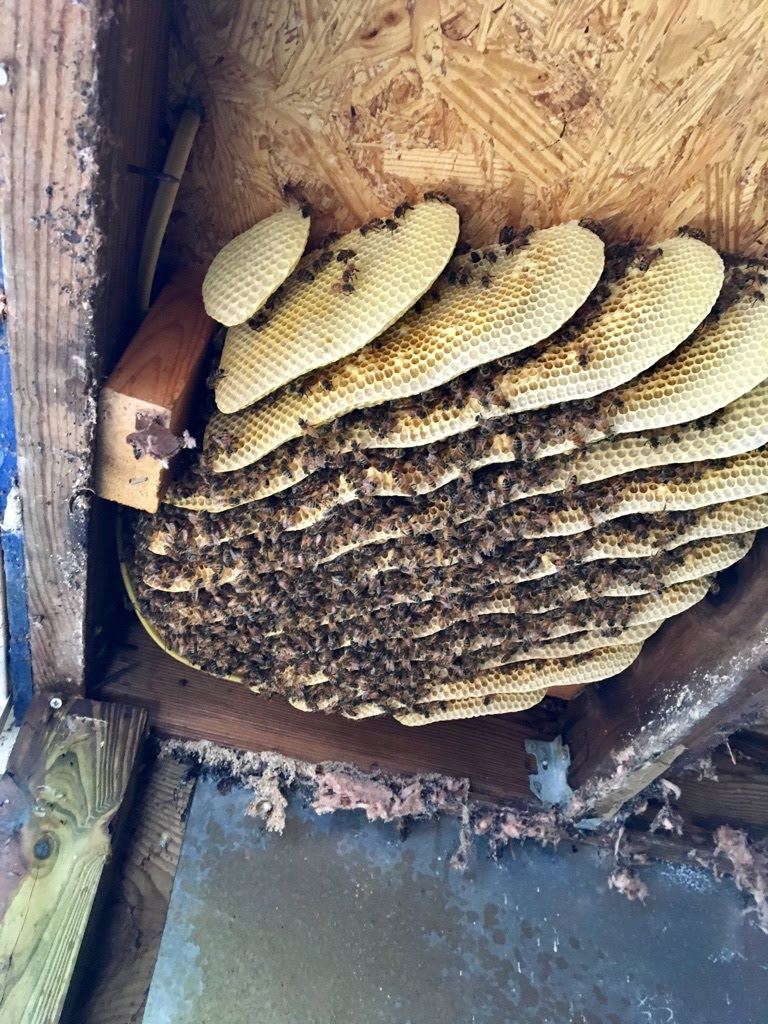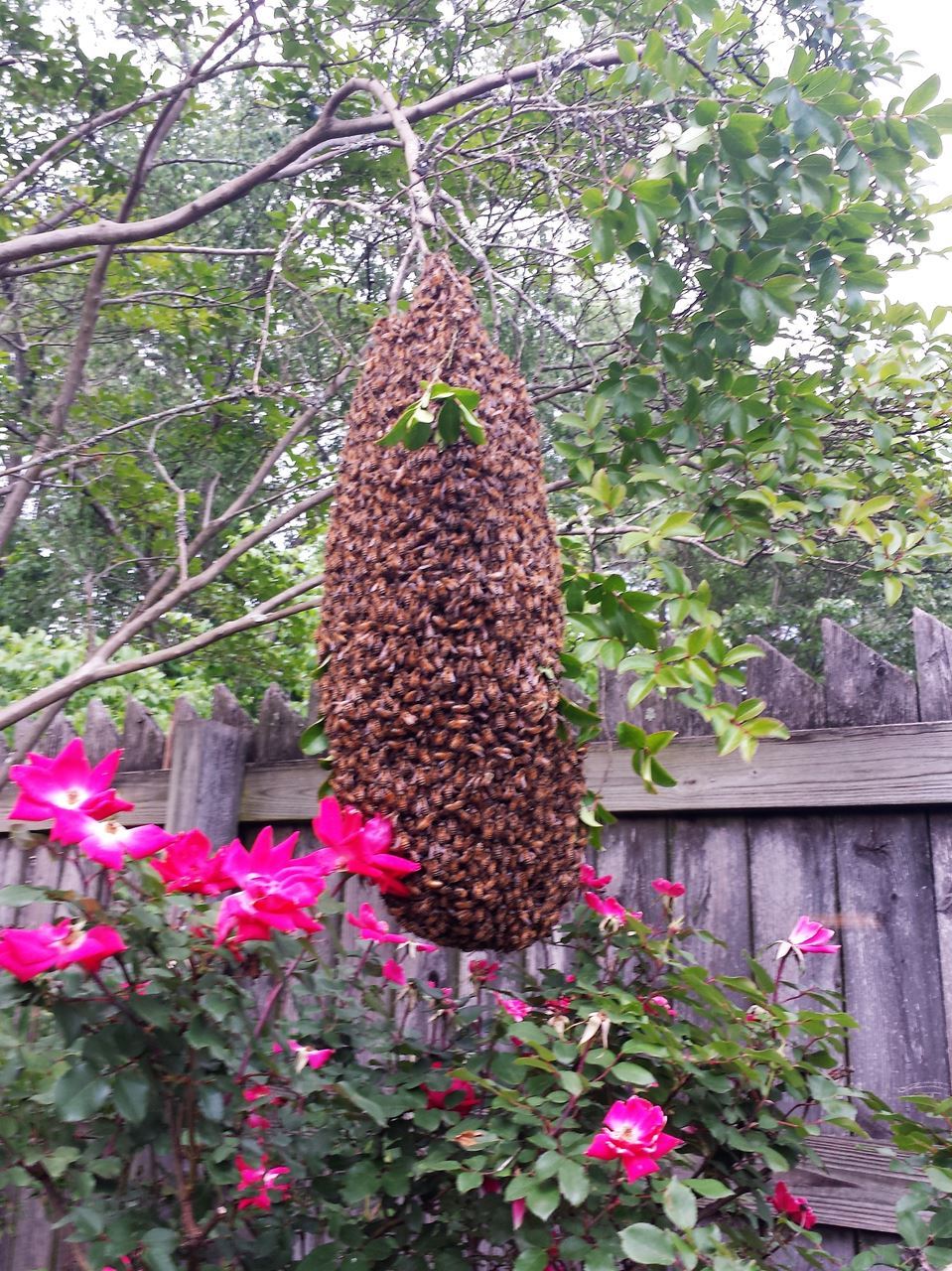Forsyth County Beekeepers Association
- Home Page
- SWARM & BEE REMOVAL

Honey Bee Swarm?
What should you do? We have partnered with an on line reporting service so that when you report a swarm, FCBA club members in your area will be notified and will contact you for more details about the swarm and schedule the removal of the swarm. Have pictures to upload if you can. |
|

What do I do if they setup and are living in my home, tree or outbuilding?
Honey bees sometimes set up home in walls, ceilings and other voids. Such situations are not "swarms" and cannot be handled as such. Many times people mistake yellow jackets, hornets and wasps for honey bees. So it is important to be ready to answer questions if you call a beekeeper. We might even ask you to send us a picture or two so we can figure out what you have and what is the best way to approach.
Many people try spraying the entry with bug spray thinking they can kill the hive, this will only create a situation that beekeepers don't want to work around. Even if you could kill the bees you would leave the honey which will eventually attract other pests. From our perspective there are two options to removing bees: "Trap Out" or "Cut Out" are options and both of these take quite a bit of effort and experience to accomplish successfully, thus most beekeepers charge for these removals.
A trap out doesn't require any demolition or construction. It takes place over an extended period of time (4 weeks to 3 months) and uses a mesh cone over the entry/exit to the hive that allows bees to exit the hive but confuses them upon re-entry. At that point the bee is 'locked out' of the hive and shortly makes a new home in the nearby bait hive the beekeeper has placed close to the original entry of the hive and the mesh cone. This method eventually brings all the bees out of the structure by not allowing any food or water to enter the hive once the mesh cone is installed. The duration of the trap out is directly affected by the quantity of food and water stores in the hive. The last step for the beekeeper is removing the cone for the remaining honey to be robbed out by area bees. Once the honey and bees are gone, the homeowner need to securely caulk and seal all entry point(s) where the bees originally entered the area. If this is not done, the probability of bees returning at some point in the future is greatly increased.
 A cut out requires demolition from within the house or outside the house. The beekeeper removes the bees, comb and honey, places these in a hive and then moves the hive to its new location. This is hot, sticky and time consuming job. It is usually in odd and awkward locations and can take anywhere from 4 to 12 hours to fully remove and prepare the void to be closed up. Most beekeepers charge and do not restore the opening they create some do, but don't forget to ask, this should be discussed before the removal begins. The homeowner normally assumes restoring the home to its original condition.
A cut out requires demolition from within the house or outside the house. The beekeeper removes the bees, comb and honey, places these in a hive and then moves the hive to its new location. This is hot, sticky and time consuming job. It is usually in odd and awkward locations and can take anywhere from 4 to 12 hours to fully remove and prepare the void to be closed up. Most beekeepers charge and do not restore the opening they create some do, but don't forget to ask, this should be discussed before the removal begins. The homeowner normally assumes restoring the home to its original condition.
What type of bee do you have? Check out this guide by NCSU ; The Bees of NC
If you have more question read our Bee Removal FAQ and then consult some of our Beekeepers who perform "Cut Outs" and/or "Trap Outs" they are listed in our Beekeeper Bee Removal List
